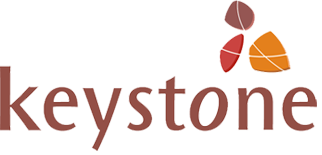
Moises Pereira of WaterAid Timor Leste carrying out the participatory partnership mapping exercise. Credit Tim Davis/WaterAid
Collaboration is a core value of international non-governmental organisation (INGO) WaterAid. The organization knows it can only achieve universal access to water and sanitation (WASH) by working with others including government bodies, civil society organisations, academic institutions, donors, other NGOs and the private sector.
WaterAid wants to develop empowering and mutually accountable and respectful relationships but knows this is easier said than done, especially when channelling money to other organizations. In some cases, a focus on project outcomes can inadvertently squeeze out attention on the quality of the relationships. To check the status of its relationships WaterAid commissioned Keystone Accountability to carry out its partnership survey.
In this guest blog Louisa Gosling, WaterAid’s Quality Programmes Manager, describes the process.
The first step to improving our partnership practice was to find out what partners think of us – what do we do well, and what do we need to do better? WaterAid commissioned Keystone Accountability to carry out a survey of our partners. We found that:
- WaterAid has many of the same strengths and weaknesses as other INGOs that work with national partners, and, like other INGOs we need to improve.
- We need to be more strategic in our relationships, and pay more attention to our partners’ long term development goals.
- Looking at WaterAid from the perspective of partners was a new and provocative experience for many people in the organization. It has provided much food for thought about what we can do better to develop more equitable, respectful and mutually accountable relationships.
So what have we done?
- We have carried out training in partnership skills with Partnership in Practice every year since 2013.
“The training was an eye opener. I had a better understanding of partnerships in WaterAid, the process

Apolonia Barreto of WaterAid Timor Leste facilitating a participatory partnership mapping exercise. Credit Tim Davis/WaterAid
and strategic thinking that goes into building partnerships.” Training participant
“It challenges people to start seeing things in a different way. Even for things that one has been doing for sometime, the training brings a reality check and soul searching.” Training participant
- We encouraged our country programmes to use the partnership pillar of the BOND organisational health check to help diagnose their own strengths and weaknesses in partnership capacity.
- We developed a partnership framework and toolkit to provide practical guidance in the processes of selection, assessment, capacity development, communication, conflict resolution, and partner exit, supported by a specific guide for finance staff to reinforce good partnership practice.
So the big question is – are these efforts to improve our practice having any discernible impact on our partners? Have they noticed any improvement in the way WaterAid treats them? We commissioned Keystone Accountability to re-run a light-touch version of the original survey. This time we learnt:
- Partners have a good level of understanding of WaterAid’s plans and strategies and have felt very involved in shaping WaterAid’s strategy.
- Overall, the average score from all the questions has marginally increased over time, suggesting some areas of partnership practice are getting better, although this does not represent a significant change and there is still room for improvement.
- When we asked our partners “The Ultimate Question” that all big companies ask: to what extent would partners recommend WaterAid to others. We got a positive score of 42 which compares with favourably with other organizations.
Do we have more to learn?
Emphatically, yes.
Our 2015-20 strategy requires collaborative relationships with many different types of organization, from social movements to academic and research institutions, at the same time we need to work in a strategic and systematic way with governments to strengthen their capacity to deliver sustainable WASH services. This is no easy task and will require a high level of skill in collaborative working.
What do we need to do more of?
- To examine in more detail how to relate with different types of organizations, especially government partners.
- More strategic processes to decide who to work with and how in the new country strategies.
- Work in a way that shows more respect for other organizations’ objectives, aspirations and identity.
- Focus on better communication – this is often where relationships break down – who, how and when to communicate.
- Frequent relationship “health checks” to look at what is working and what isn’t and take immediate action to overcome difficulties.
- Check our compliance procedures and how they can better enable good relationships.
- Plan for exit from the beginning. Discuss how and when the relationship will end. Avoid dependence, work towards sustainable systems.
- Keep doing the training, have a community of practice and learn from other organizations.
You can read a longer version of this blog on WaterAid’s website.
For more information on Keystone Accountability’s Partnership survey please contact Kai [@] KeystoneAccountability.org.
